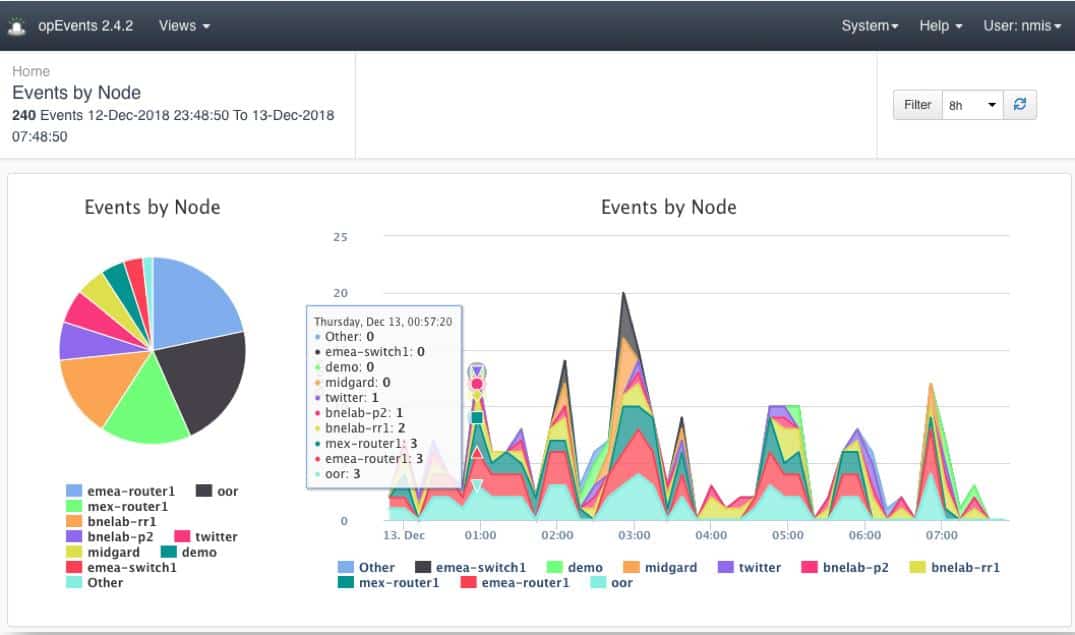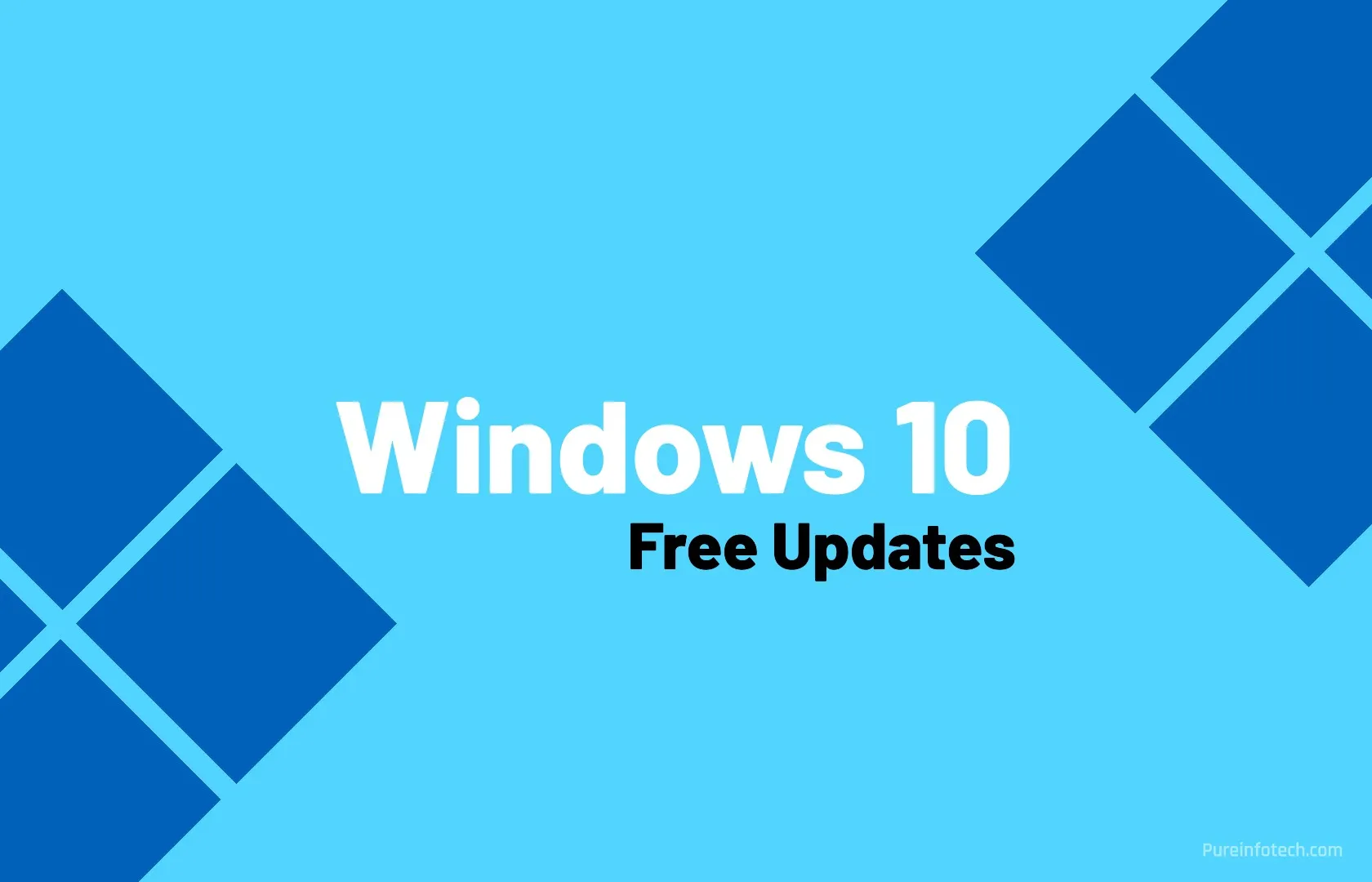Vendor Spotlight: Opmantek

Opmantek created an open-source monitoring tool called NMIS – that stands for Network Management Information System. The company also created another free package called Open-AudIT, a system documentation tool. Both of these systems are properties of FirstWave Cloud Technology Ltd., which bought Opmantek in January 2022.
The Opmantek brand continued for at least a year after the sale of the company. However, it has now disappeared, with FirstWave branding both NMIS and Open-AudIT with its own name.
Founding and Background
Opmantek is an Australian-based software company that specializes in network management, monitoring, and automation solutions. The company was founded in 2010 by Danny Maher, an experienced technology entrepreneur. Opmantek has gained recognition for its open-source network management software and its ability to offer scalable, flexible solutions for businesses and service providers of all sizes.
Opmantek’s mission is to help businesses automate their network management and improve operational efficiencies. Their tools are designed to handle complex IT environments with minimal manual intervention, allowing for faster troubleshooting, better performance, and cost savings.
The company’s products were developed as open-source projects. This strategy has the advantage of getting developers to contribute coding effort for free. However, the big problem with such projects is that they are difficult to commercialize and so hard to fund.
In 2013, Opmantek made a strategic acquisition of Open-AudIT, another open-source software tool. This system is designed for network discovery and auditing. Open-AudIT allows businesses to automatically discover devices on their network, catalog them, and provide a detailed inventory of hardware, software, and configuration settings. The utility enhanced the operations of Opmantek’s main tool, which was called The Network Management Information System (NMIS).
In December 2021, FirstWave Cloud Technology, an Australian cybersecurity company, acquired Opmantek. This acquisition was seen as a strategic move for FirstWave to expand its network management capabilities and enter the enterprise network management market.
FirstWave Cloud Technology was founded by Scott Lidgett in 2004. The company, based in Sydney, Australia, focuses on providing adaptive and comprehensive cybersecurity solutions, including managed Security as a Service (SaaS) offerings.
Timeline and Evolution
Here’s a timeline of key events in Opmantek’s history, highlighting significant milestones from its founding to major product releases and acquisitions:
- 2010: Opmantek was founded by Danny Maher in Gold Coast, Australia, with the goal of providing open-source network management and monitoring software solutions.
- 2011: Opmantek’s first major product, the Network Management Information System (NMIS), is released. NMIS is an open-source network management platform.
- 2013: Opmantek acquires Open-AudIT, a popular open-source tool for network discovery and auditing. Opmantek begins to see significant adoption of its products, particularly in the telecommunications and IT sectors.
- 2014: Opmantek launches opCharts, a real-time network monitoring and reporting tool that integrates with NMIS to provide data visualization through charts and graphs. Opmantek continues to develop additional modules and tools around NMIS.
- 2015: Opmantek releases more OMK (Opmantek Modules for NMIS) Apps, which extend NMIS’s capabilities.
- 2016: Opmantek launches Open-AudIT Enterprise, an advanced version of the original Open-AudIT. By this time, Opmantek’s products are in use by over 100,000 organizations worldwide.
- 2018: NMIS 9, which includes significant updates and improvements. A major upgrade of Open-AudIT is released, called Open-AudIT v2.0.
- 2019: Opmantek continues to expand its customer base globally, particularly focusing on large telecommunications companies, managed service providers (MSPs), and enterprise customers.
- 2020: Opmantek partners with various companies and expands into more international markets, including the U.S., Asia, and Europe.
- December 2021: Opmantek is acquired by FirstWave Cloud Technology, an Australian-based cybersecurity and network management firm.
- 2022: Opmantek is integrated into FirstWave’s business, combining its network management tools with FirstWave’s cloud security offerings.
- 2023: Under FirstWave, Opmantek continues to innovate, focusing on enhancing its automation, and scaling its products for larger networks.
Company Ownership
Opmantek was majority-owned by its founder, Danny Maher, The takeover by FirstWave was, in fact, a merger with Opmantek’s shareholders gaining 42 percent of FirstWave. As Danny Maher was the majority shareholder in Opmantek, he gained a large holding in the parent company. Danny Maher took over the role of CEO of FirstWave.
FirstWave Cloud Technology Ltd is a publicly listed business with its shares traded on the Sydney Stock Exchange.
Target Market and Customer Base
Opmantek, the company behind NMIS (Network Management Information System), primarily targets a broad range of customers across different sectors.
Target Market
The target market for Opmantek coil is also expressed as the target market for NMIS. The types of organizations that tool is suitable for include:
- Mid-size to large enterprises: Opmantek is designed to manage complex IT environments.
- Managed service providers (MSPs): Opmantek offers features like remote monitoring, issue management, and backup management, specifically catering to MSPs.
- Public sector and government agencies: Opmantek solutions are often used by public administrations to monitor and manage large-scale government networks.
- Small businesses and startups: While typically serving larger entities, the open-source version of NMIS allows smaller companies or startups to manage their networks effectively.
Customer Base
Opmantek serves a diverse customer base that includes enterprises, managed service providers (MSPs), government agencies, educational institutions, and telecommunications companies. These organizations leverage Opmantek’s software for network management, automation, and security, particularly for large and complex IT infrastructures.
The company boasts a notable customer base, including high-profile organizations from various industries. Among its most significant clients are Microsoft, which utilizes Opmantek software for monitoring its internal networks and automating IP address management, and NASA. NASA employs Opmantek tools as part of the infrastructure supporting the Artemis program, the mission aiming to return humans to the moon.
Other major clients include Telmex and Claro, two leading telecommunications companies, and Nextlink, a major internet service provider in the US. Opmantek has also built a strong presence in telecommunications and managed service providers (MSPs) globally, reflecting its ability to scale and manage complex IT environments.
Opmantek Product Suite
Opmantek offers a comprehensive product suite designed to help organizations manage, monitor, and automate their IT infrastructure. Here’s an overview of their key products:
1. NMIS (Network Management Information System)
NMIS is an open-source network management tool that offers performance monitoring, fault detection, and network analysis. It serves as the backbone of the Opmantek suite, providing features like network mapping, real-time monitoring, and event management.
Target Users
This monitoring system is used by enterprises, service providers, and government agencies globally, it’s designed for scalability, handling large-scale environments
Additional Modules
As it is an open source package, the NMIS system can be customized and its modules can be accessed directly. Thus, you don’t have to add on the supplementary units or you can use them individually and even integrate them into your own custom system. These units are:
- opCharts: A visualization tool that provides interactive dashboards, network performance graphs, and customizable reports.
- opEvents: This is an event manager that helps automate event correlation, escalation, and remediation. It processes and categorizes network events, which includes spotting problems.
- opConfig: A configuration management system that provides automated backup for network device settings and restores the image if it detects changes in the current device configuration.
- opFlow: A network traffic analyzer that provides detailed traffic analysis, helping organizations track bandwidth usage, identify anomalies, and improve network efficiency.
- opReports: This unit generates detailed reports on network performance, device health, and SLA compliance.
- opHA: This is a high-availability service that provides failover capabilities for NMIS installations, ensuring that the network monitoring system remains operational during hardware failures or other disruptions.
2. Open-AudIT
Open-AudIT is an asset discovery and system auditing package. The purpose of this system is to provide an automated cycle of network scans that identifies each device and creates a network inventory. Open-AudIT is also a network auditing tool because it gives an administrator an opportunity to assess the age of devices and plan for replacements and it will also reveal unauthorized devices.
3. Secure Traffic Manager (STM)
Secure Traffic Manager is a network security tool. It focuses on enhancing network traffic visibility and control to improve network security. It’s part of Opmantek’s newer offerings, aimed at cybersecurity.
Opmantek Delivery Strategy
The tools in the Opmantek product list integrate seamlessly, allowing businesses to automate their network operations, improve monitoring efficiency, and enhance the security of their IT infrastructures. Opmantek’s product suite is versatile, scalable, and designed to cater to businesses ranging from mid-size enterprises to large service providers.
The source code for each module is available on GitHub, so anyone can download the software, adapt it if they like, and use it for free. That also means that users don’t have to take on the entire suite. Even the NMIS package can be unbundled, taking a single unit instead of the lot. The Open-AudIT system was originally a separate system, and Opmantek bought it to provide discovery and documentation for the NMIS system. However, it is still available from its own website as a standalone package.
Opmantek Product Suite Challenges
The popularity of Opmantek’s systems was greatly enhanced by the fact that they are free and open-source software packages. However, this presents a commercialization problem for Opmantek, which has been inherited by FirstWave.
There is a well-trodden path for open-source projects to commercialize and it has been followed by systems such as Metasploit, Nagios, Splunk, and Graylog. That is, to set up a business to market the package and provide support services for a fee. The next phase is to move the package to the cloud and charge for that service while enabling the public to download the open-source software for free from a repository. A good example of that strategy was implemented by the Elastic Stack.
So, the path to making money from a system like Opmantek is available. Opmantek was clearly following that path by offering the code for download and a package that could be accessed in a Free edition to manage a network of up to 20 nodes – which is a small network. The Opmantek site advertised two paid Editions: Professional and Enterprise.
FirstWave has continued the Opmantek strategy with a small adjustment. That is, it does not advertise the paid editions. In fact, it is not clear exactly how much the tool now costs. The website is clear that the system that it makes available is a free trial and covers 20 nodes, but it doesn’t mention anywhere how or when that downloader would need to pay.
Obscuring the details of the FirstWave pricing model is a risky strategy. Small businesses like to know what costs they are committing to before engaging with a product. As the 20-device version used to be perpetually free, it could be assumed that this downloadable package will continue to work even if the business decides not to pay. However, it is not clear from the current FirstWave presentation that this is still the case. The doubt would also deter small businesses from trying out the product.
NMIS 9 was developed by Opmantek and released in July 2020. It was the flagship product of Opmantek and today is the flagship product of FirstWave, which acquired the rights to the tool in January 2020. The package serves as a comprehensive, open-source network management solution.
Here’s a review of its key features and performance:
1. Core Features
- Network monitoring: NMIS 9 offers real-time network monitoring, performance tracking, and fault detection. It provides detailed metrics on devices, interfaces, and network elements, which helps users stay on top of performance issues.
- Scalability: NMIS 9 is designed to handle networks of any size, from small networks to those with thousands of devices. It efficiently scales in large environments, making it suitable for enterprises and service providers.
- Customizability: One of NMIS 9’s strongest points is its flexibility. It allows for custom workflows, monitoring templates, and even integration with third-party tools through its modular architecture.
2. Performance
- Fast data processing: NMIS 9 is known for its speed and reliability in processing locally-collected data. Users benefit from its capacity to detect and report network anomalies quickly, which helps reduce downtime.
- Automation: With integrated automation capabilities, NMIS 9 minimizes the manual intervention needed to manage large networks. Automated alerts and self-healing functionalities are important features that significantly improve operational efficiency.
3. Ease of Use
- User interface: The console of NMIS is highly customizable, and that can be a problem for non-technical users who might struggle to define their ideal screens. However, once familiar with the system, users appreciate the depth of control and insight it provides.
- Reporting: NMIS 9 offers excellent reporting capabilities. However, these rely on the supplementary modules for the package, which some NMIS users might decide not to access. As the package is customizable, it is possible to set up data feeds to other applications for reporting.
4. Cost and Value
- Obscured pricing: The price issue is a weak point of NMIS. FirstWave doesn’t make it clear which parts are free forever, or how they prevent those people who have the source code from continuing to use the package without paying.
5. Customer Feedback
- Users appreciate NMIS 9’s scalability and real-time data processing speed, particularly for large enterprises. However, some find the initial setup challenging and the learning curve steep due to the advanced features.
Overall, NMIS 9 is highly regarded for its powerful monitoring, flexibility, and scalability, making it a popular choice for enterprises, MSPs, and government agencies looking to manage large networks efficiently.
Other Notable Products
Apart from the supplementary modules of NMIS, Opmantek marketed two other tools.
1. Open-AudIT
Open-AudIT by Opmantek is a powerful network discovery and auditing tool that provides comprehensive insights into an organization’s IT assets. Its key feature is automated discovery, where it scans networks to identify devices, software, and configurations, giving IT managers a full inventory of hardware and software resources. The system helps with tasks such as compliance, auditing, and vulnerability management by maintaining an up-to-date inventory of all networked devices.
Key Features:
- Discovery: Open-AudIT can discover various devices (routers, switches, computers, etc.) using multiple protocols like SNMP and WMI, allowing for detailed asset inventories.
- Compliance auditing: It helps organizations comply with regulatory standards by providing a full inventory and history of all changes made to the devices and software within the network.
- Custom reporting: Users can generate custom reports on network assets, which is useful for Auditing, compliance checks, and budgeting.
Performance
Open-AudIT is known for its accuracy and detailed reporting. The discovery process is fast and easy, making it a good fit for companies looking to get a quick, comprehensive overview of their network. However, some users report that the setup can be complex, especially in larger environments.
Value
Open-AudIT is available in both free and paid versions, with the latter offering more advanced features like automation, API integrations, and additional support. For organizations that need detailed network insights and compliance support, Open-AudIT is an excellent tool, especially in conjunction with other Opmantek products.
2. Secure Traffic Manager
Secure Traffic Manager (STM) by Opmantek is designed to provide enhanced visibility and control over network traffic, focusing on network security. It enables organizations to manage, analyze, and control network traffic flows, ensuring that sensitive data remains secure, and compliance requirements are met. STM is particularly useful for monitoring traffic between network segments and identifying security risks, such as unauthorized access or unusual data flows.
Key Features:
- Traffic monitoring: STM provides deep insights into the types of traffic flowing across the network, helping to detect anomalies or potential security breaches in real time.
- Traffic segmentation and control: The tool allows for better control over how traffic moves between network segments, making it easier to isolate sensitive data and ensure that only authorized devices can communicate across these segments.
- Security auditing: STM assists in auditing network traffic patterns, ensuring that businesses can meet security compliance standards such as PCI DSS, HIPAA, and other regulatory frameworks.
Performance
STM is praised for its ability to provide real-time traffic analysis, which is crucial for detecting and mitigating threats before they cause major disruptions. Its deep integration with other Opmantek products enhances its functionality, especially for large organizations with complex networks. However, the complexity of its setup and configuration might require expertise for optimal use.
Value
STM is typically used in conjunction with Opmantek’s broader network management suite, and its value lies in its ability to improve security postures across large, distributed networks. Annoyingly, FirstWave doesn’t publish the price for this tool so it is impossible to deduce whether it offers value for money.
Major Competitors
Opmantek, known for its network management and IT automation tools, competes in a crowded market with several established players. Here are the major competitors to Opmantek:
- Zabbix An open-source network monitoring tool that provides real-time monitoring of millions of metrics collected from various network devices, servers, and virtual machines. It offers flexible and scalable solutions for businesses of all sizes, with features like data visualization, alerting, and reporting. Zabbix supports a wide range of protocols and can be customized to meet specific monitoring needs, making it a popular choice for IT infrastructure management.
- Splunk Specializes in data analysis and monitoring, transforming machine data into valuable insights. It offers a platform for searching, monitoring, and analyzing machine-generated data from various sources like websites, applications, sensors, and devices. Splunk’s capabilities include real-time data processing, visualization, and alerting, which help organizations improve operational performance, security, and business intelligence. Its versatility and scalability make it suitable for enterprises across different industries.
- BMC Software Provides comprehensive IT management solutions that help businesses optimize their IT infrastructure and operations. Its product portfolio includes tools for IT service management, automation, performance monitoring, and cloud management. BMC’s solutions are designed to enhance efficiency, reduce costs, and ensure compliance with industry standards. The company’s focus on innovation and customer-centric approach has made it a leader in the IT management space.
- Netwrix Focuses on data security and IT auditing, offering solutions that help organizations identify and mitigate security risks. Its products provide visibility into user activities, system configurations, and data access, enabling businesses to detect anomalies and ensure compliance with regulatory requirements. Netwrix’s tools are designed to simplify auditing processes, enhance data protection, and support proactive security measures, making it a trusted partner for organizations seeking to safeguard their IT environments.
- Nagios Provides powerful monitoring of IT infrastructure, including servers, network devices, applications, and services. It offers comprehensive monitoring capabilities, alerting, and reporting, ensuring the availability and performance of critical systems. Nagios is highly customizable and supports a wide range of plugins and add-ons, allowing users to tailor the monitoring solution to their specific needs. It has a free, open-source version, called Nagios Core, and a paid package, called Nagios XI.
- ManageEngine Offers a suite of IT management tools that cover various aspects of IT operations, including network monitoring, server management, application performance, and security. Its products are designed to simplify IT management, improve efficiency, and enhance the user experience. ManageEngine’s solutions are known for their ease of use, affordability, and comprehensive feature sets, making them suitable for businesses of all sizes.
- Datadog Specializes in cloud-scale monitoring and analytics, providing a unified platform for monitoring infrastructure, applications, and logs. It offers real-time visibility into the performance and health of systems, enabling organizations to detect and resolve issues quickly. Datadog’s features include dashboards, alerting, and integrations with various cloud services and tools. Its scalability and flexibility make it ideal for modern, dynamic IT environments.
- SolarWinds Known for its network and systems management solutions, offering a range of products that help IT professionals monitor and manage their infrastructure. Its tools cover network performance, server health, application monitoring, and security. SolarWinds’ solutions are designed to be user-friendly, scalable, and cost-effective, making them accessible to businesses of all sizes. The company’s focus on customer feedback and continuous improvement has solidified its reputation in the IT management industry.
- Paessler Provides PRTG Network Monitor, a comprehensive network monitoring solution that covers all aspects of IT infrastructure. PRTG offers real-time monitoring, alerting, and reporting for network devices, servers, applications, and services. It supports a wide range of protocols and technologies, making it versatile and adaptable to different environments. Paessler’s focus on ease of use, scalability, and reliability has made PRTG a popular choice for IT professionals seeking a flexible monitoring package.
- LogicMonitor Delivers cloud-based infrastructure monitoring, offering comprehensive visibility into the performance and health of IT systems. Its platform supports monitoring of networks, servers, applications, and cloud services, providing real-time insights and alerting. LogicMonitor’s features include automated discovery, customizable dashboards, and integrations with various tools and services. Its scalability and flexibility make it suitable for organizations of all sizes, helping them ensure optimal performance and availability of their IT infrastructure.
Source link











